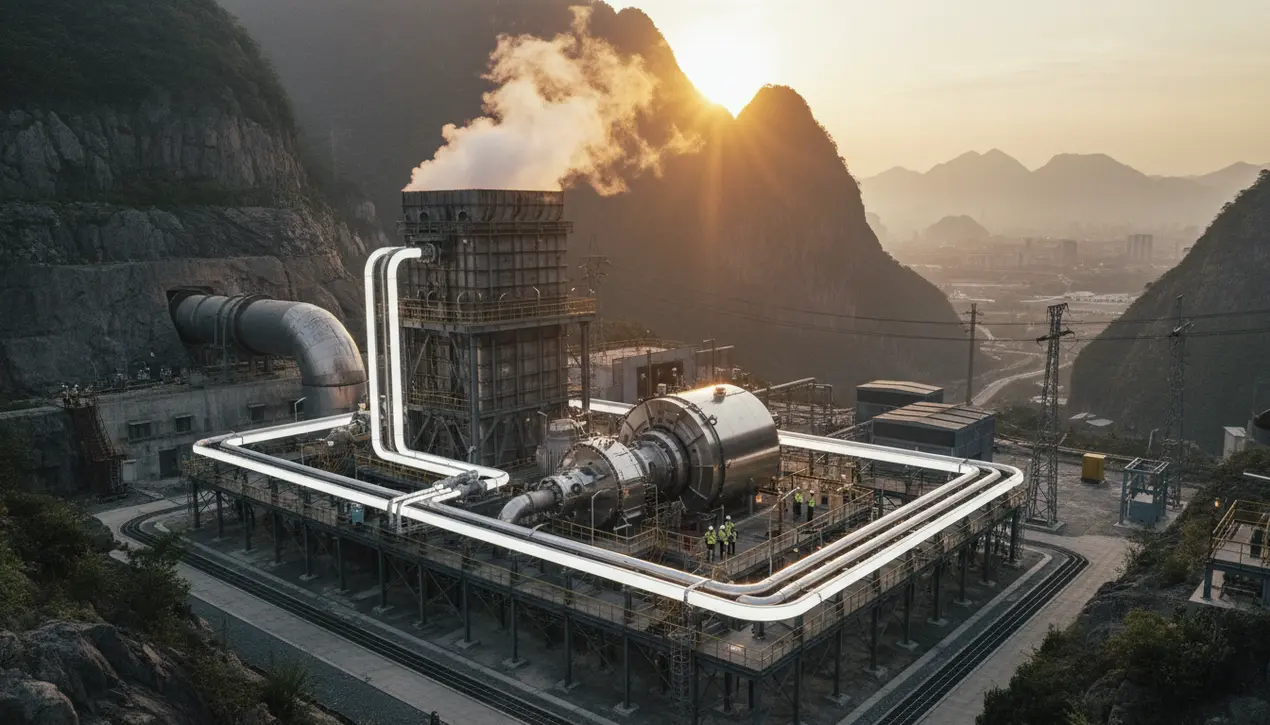
AIchips & hardwareEnergy Efficiency
China Connects World's First Supercritical CO2 Generator to Grid.
TH
Thomas Green
5 hours ago7 min read
In a development that feels ripped from the pages of a hard sci-fi novel, China has successfully connected the world's first commercial supercritical carbon dioxide power generator to its electrical grid—a technological leap that could fundamentally reshape our clean energy infrastructure. This isn't merely an incremental improvement; it's a paradigm shift orchestrated by the China National Nuclear Corporation (CNNC), which has pioneered a system that replaces traditional steam with supercritical CO2 as its heat-transfer medium.The specific installation, located at a steel production facility in the mountainous Guizhou province, is a masterclass in efficiency, designed to capture waste heat from industrial processes and convert it into usable electricity, thereby turning a liability into a power asset. For decades, the principles of thermal power generation have remained stubbornly anchored in the 19th century, relying on vast quantities of water converted to steam to spin turbines—a process notoriously inefficient and water-intensive.The supercritical CO2 cycle, by contrast, operates in a state where carbon dioxide is heated and pressurized beyond its critical point, behaving not as a liquid or a gas but as a superfluid with the density of a liquid and the viscosity of a gas. This unique physical state allows it to drive turbines with breathtaking efficiency, potentially boosting conversion rates from waste heat by up to 50% compared to traditional steam Rankine cycles, all within a footprint that is a fraction of the size.The implications for heavy industry, from steel to cement manufacturing, are staggering, offering a path to drastically reduce their massive carbon footprints by harnessing their own waste streams. Furthermore, this technology dovetails perfectly with advanced nuclear reactor designs, where higher temperatures can be exploited for greater electrical output, hinting at a future where nuclear power becomes even more potent and compact.While the United States and Europe have long conducted research in sCO2 systems, primarily in lab settings, China's move to a commercial-scale, grid-connected unit represents a decisive first-mover advantage in the global race for next-generation energy tech. This achievement signals not just technical prowess but a strategic vision to dominate the supply chains for the energy systems of tomorrow, much as it has with solar panels and batteries.The Guizhou project is a proof-of-concept that will be closely watched by energy analysts worldwide; its long-term reliability, maintenance challenges, and economic viability will now be put to the test. If successful, it could trigger a global scramble to adopt sCO2 technology, forcing Western nations to accelerate their own development programs or risk ceding another critical technological frontier. This is more than a power plant; it's a statement of intent, a glimpse into a future where industrial processes are seamlessly integrated with hyper-efficient power generation, pushing humanity one step closer to a sustainable, high-tech energy paradigm worthy of our cosmic ambitions.
#supercritical CO2
#nuclear technology
#clean energy
#power generation
#waste heat
#China
#featured
Stay Informed. Act Smarter.
Get weekly highlights, major headlines, and expert insights — then put your knowledge to work in our live prediction markets.
Comments
Loading comments...
© 2025 Outpoll Service LTD. All rights reserved.